How to Harvest Sweet Potatoes
This post may contain affiliate links, view our disclosure policy for details.
Let’s go over all the information that you need to know about harvesting sweet potatoes. It’s so much fun! But there are a few steps that you want to make sure you follow in order to ensure the best and sweetest sweet potatoes.
From all the vegetables that grow in my garden, sweet potatoes are, hands down, the easiest to grow.
This is probably due to the fact that I live in North Carolina and sweet potatoes love it here.
They love the heat and humidity, they have no problem with the rather heavy soil, they handle the weeks of no-rain very well and, on the other hand, they have no problem with the occasional monsoon.
I grow purple sweet potatoes mainly, simply because the orange sweet potatoes are given away pretty much for free in town (we have a community food pantry in town) at least a couple of times a year.
How to Harvest Sweet Potatoes…
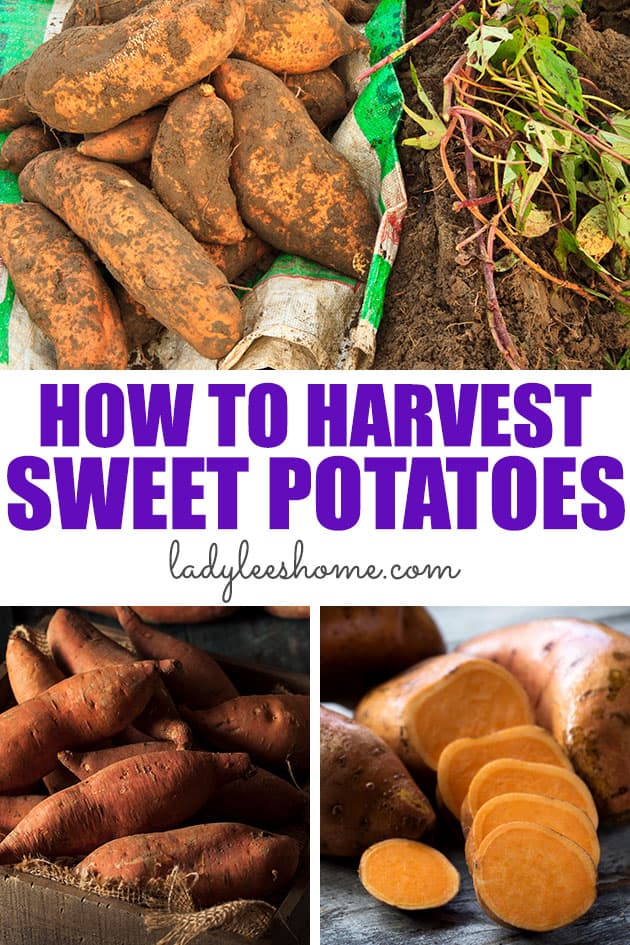
It doesn’t matter what type or variety of sweet potato you choose to grow… Planting sweet potatoes is easy, and in most cases, I can plant the slips and leave the potato plants alone.
Occasionally, I might have a deer come by to nibble on the leaves (this can be dealt with by setting up a simple deer fence) or a cute bunny stopping by but the plants can usually recover.
Other than that, I don’t do much for the plants. If I make sure to plant them in a sunny spot and in decent soil, they’ll take off very quickly.
We always look forward to harvesting sweet potatoes!
We get to see the beautiful plants growing all over the place and what’s under the soil is a mystery waiting to be revealed. When harvest time comes, it’s so much fun to finally collect the treasure.
When to Harvest Sweet Potatoes…
Sweet potatoes need a long growing season.
Here in the South, in zone 7b I start sweet potato slips indoors in March and plant them in the garden in mid-May after all danger of frost is gone and the soil has had enough time to warm up a bit.
I let them be and not harvest until the end of October. That’s five months of growing in the garden.
If you live in a colder climate, I believe that you can still grow sweet potatoes, however, you might need to create mini hoop houses over your rows or beds with a greenhouse plastic in order to extend the growing season a bit.
You can, probably, harvest sweet potatoes after four months of growing in the garden but your potatoes will be smaller. I find that five months allows the potatoes to grow to their best and fullest size.
The important thing to remember is that sweet potatoes do not like the cold. Watch your weather forecast and make sure that you harvest your potatoes BEFORE the first frost.
You might read in some places that you can harvest after the first frost but I disagree. The sweet potatoes will suffer from the cold and even if they look ok when you harvest them, they won’t last as long in storage.
As you get closer to harvest time, you might notice that the leaves of the plant start to yellow. That’s normal. I don’t remove them or do anything else. I let them be and still wait for the end of October to harvest.
Tools that we Need to Harvest Sweet Potatoes…
I actually recommend that you don’t use any tool.
You can use a garden fork or a shovel to loosen the soil around the potatoes but I have to admit that every time that I get impatient and do that I end up damaging a potato.
if your potato patch is not too big, if you have some helpers, and if you are in no hurry, just use your hands.
I have to admit, it’s a lot of fun to be digging like a child again (and the kids are always willing to join the digging party!).
If you choose to use a tool to loosen the soil, make sure to locate the base of the plant and move at least 18” away from it. The cluster of potatoes will grow right there under the base of the plant so if you move away there is less chance that you’ll damage the potatoes.
How to Harvest Sweet Potatoes…
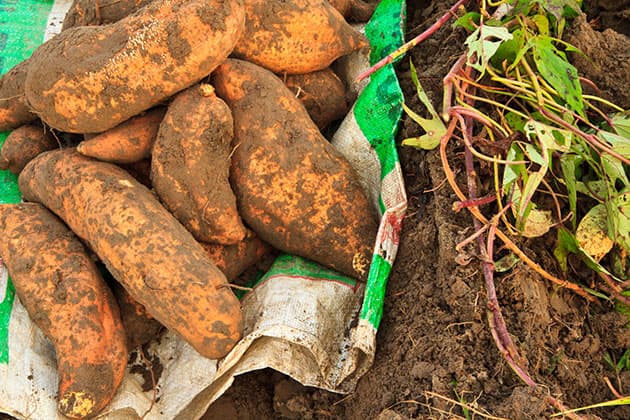
Harvesting sweet potatoes is pretty simple…
Step 1 – collect all of the vines and roll them off the garden bed. They usually disconnect from their base pretty easily.
I simply start at one end of the bed and start rolling the vines into a large ball. I give this large mass of vines to may goats. They love it!
If you don’t have livestock to eat the vines, you can add them to the compost pile.
Also, remember that you can use young sweet potato leaves as you would use spinach. They are delicious and very healthy! They help regulate sugar levels in our blood stream so feel free to pick a few for yourself to enjoy.

Step 2 – after the vines are rolled away, the fun part begins.
If you are going to use a tool to loosen the soil, this is the time to use it. If you are just going to use your hands, dig in!
Locate the base of the plant and gently pull… You will, most likely, be able to remove most of the potatoes this way (as you can see in the photo above), however, you’ll still have to carefully dig around to remove the rest of the potatoes.
Remember to be gentle! The skin of the potatoes is what protects them and what allows them to last a long time in storage and the skin at harvesting time is VERY thin. We want to do our best not to damage the skin while harvesting the sweet potatoes.
As you harvest, place your sweet potatoes on the ground nearby or in a bin but don’t pile them on top of each other. Try to lay them in one layer.
Also, don’t wash the potatoes! Gently brush some of the soil away without damaging the skin but do no more. After the potatoes have gone through the curing process (more on this in a minute) we can clean them better.
How to Cure Sweet Potatoes…
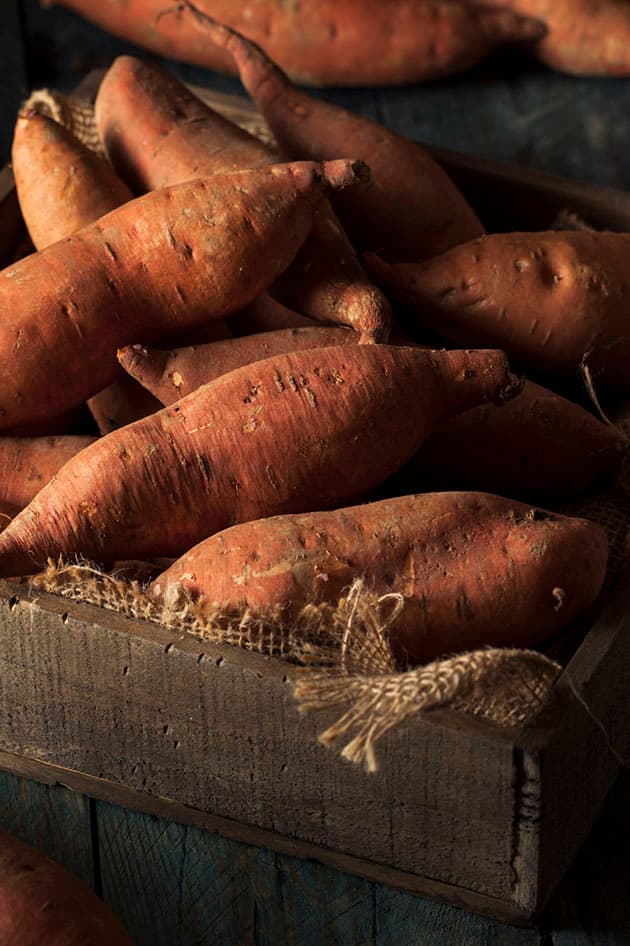
Now that all the sweet potatoes are harvested the next very important step is to cure them.
Curing potatoes simply means letting them dry and giving the skin time to thicken. Curing also gives the potato time to develop their sugars which makes the potato tastes much sweeter than if you would have eaten it right after harvesting.
To cure sweet potatoes, you want to find an area around the homestead that checks most of these requirements…
- A covered area (don’t make the mistake of leaving the potatoes to cure in the garden. At some point it will rain or there might be a wet night and the moisture will ruin your crop).
- A well-ventilated area. Consider adding a fan to move the air around the potatoes.
- An area with temperatures around 80 degrees Fahrenheit or so.
- An area with about 80% humidity (don’t sweat this too much).
- And an area that you can leave the potatoes undisturbed for 10-14 days.
Lay your potatoes on a table or a screen (if you have one) in one layer with a bit of space between them and let them be. Every couple of days, come by and turn the potatoes.
How to Store Sweet Potatoes…
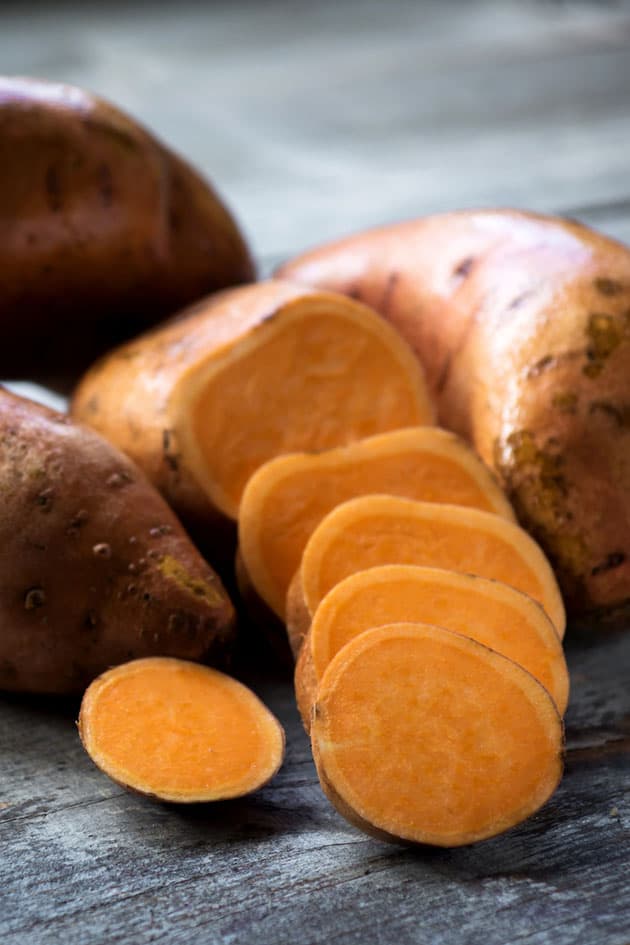
After curing, it’s time to sort and store your sweet potatoes.
Start by sorting them. Go over your potatoes one by one and brush the dry soil off. Then look each potato over and if the potato is damaged put it aside.
Make sure to use the pile of damaged potatoes first and don’t store them with the not damaged potatoes.
Do not store the damaged potatoes in the fridge! Just make sure to keep them close to the kitchen and use them within a few weeks after curing or preserve them (more on this in a minute).
The sweet potatoes that you are going to store for the winter should be stored in a well-ventilated, cool room. Preferably in 55 degrees Fahrenheit or so.
Some people wrap individual potatoes in newspaper, some people place them in crates with straw or shredded paper and some say that none of this is really necessary.
Whatever you choose to do, make sure to check your potatoes every couple of weeks and remove any potato that is getting soft so it doesn’t damage the rest of them.
If cured right and stored right, sweet potatoes should last around 6 months in storage.
How to Preserve Sweet Potatoes…
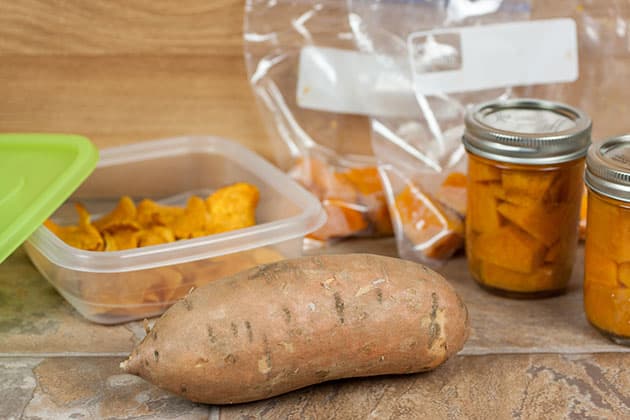
If you can’t find a space with the right temperature to store sweet potatoes for the winter months, you can always preserve them in other ways.
You can freeze sweet potatoes, can sweet potatoes, or maybe even dry sweet potatoes (I’ve never tried this but I make sweet potato chips which I guess is another way of drying sweet potatoes).
My personal choice (since I don’t have a space with the right temperature for long term sweet potato storage) is freezing sweet potatoes.
I freeze them mashed in portions for my favorite sweet potato bread that we enjoy all year but of course, there are a million other ways to use mashed sweet potatoes.
Overall, sweet potatoes are an amazing crop for any homesteader to grow. They are easy to plant, not spoiled and easy to grow, last a long time in storage, have so many uses, and of course, delicious!
Harvesting sweet potatoes is a fun activity for the whole family. We usually make a whole fun morning out of it and it’s a time that we always look forward to.
I hope that you enjoyed this post! Make sure to check some of these other ones as well!


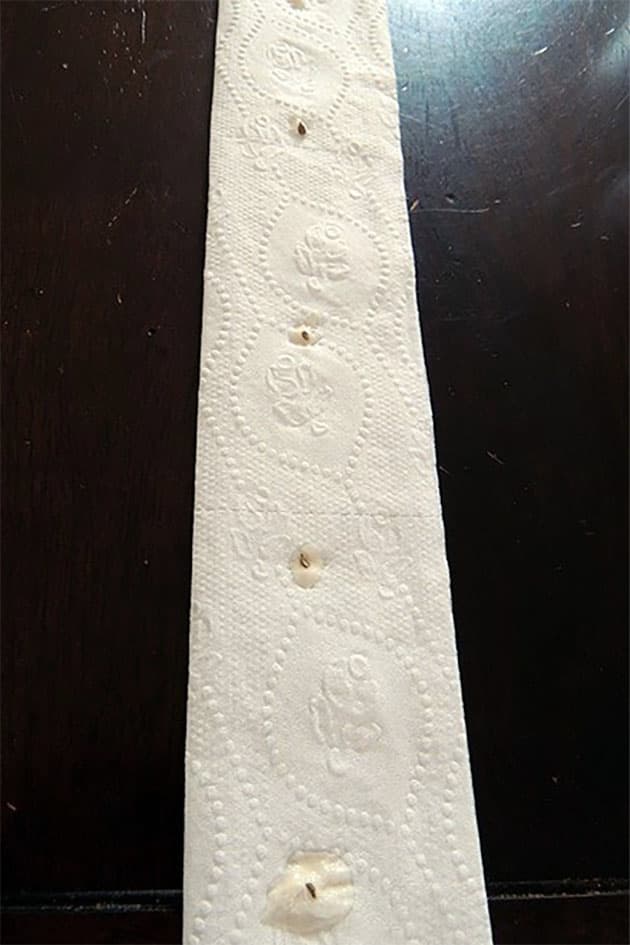
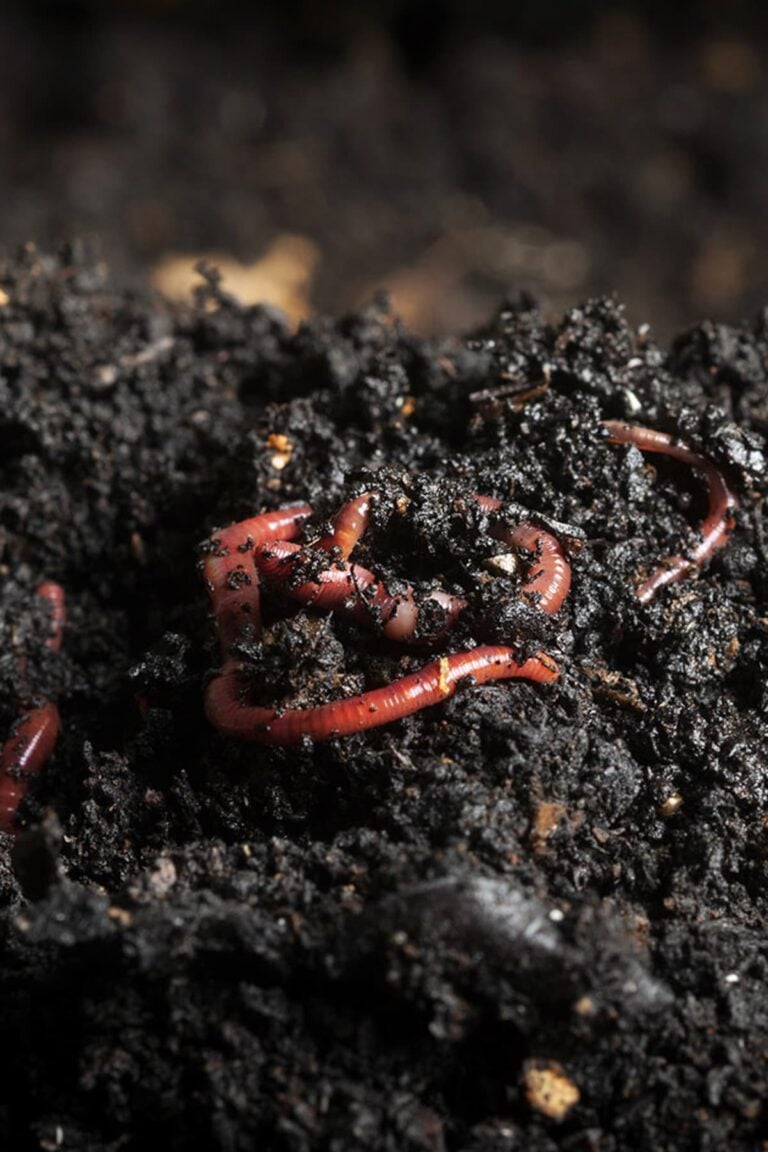
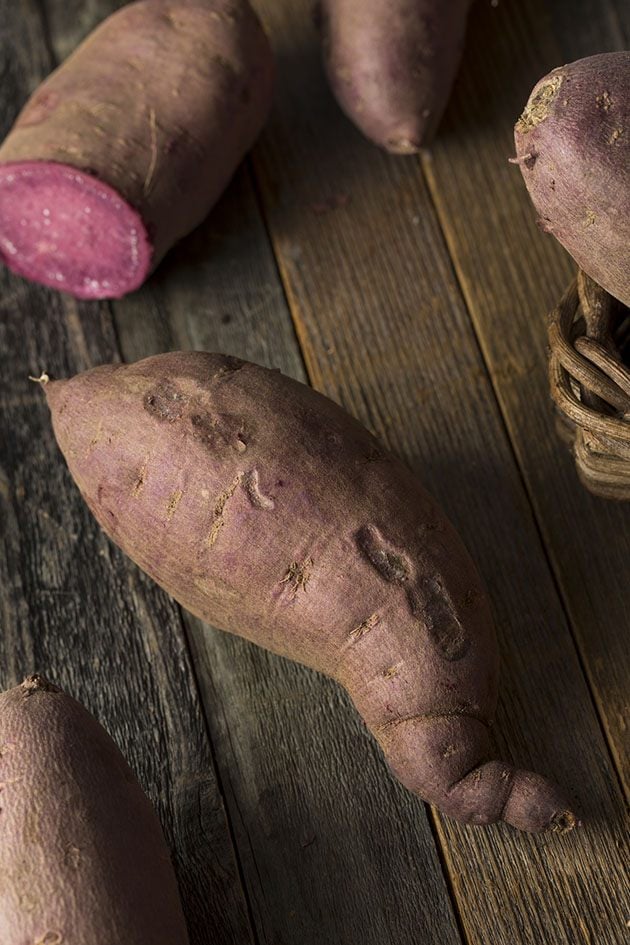
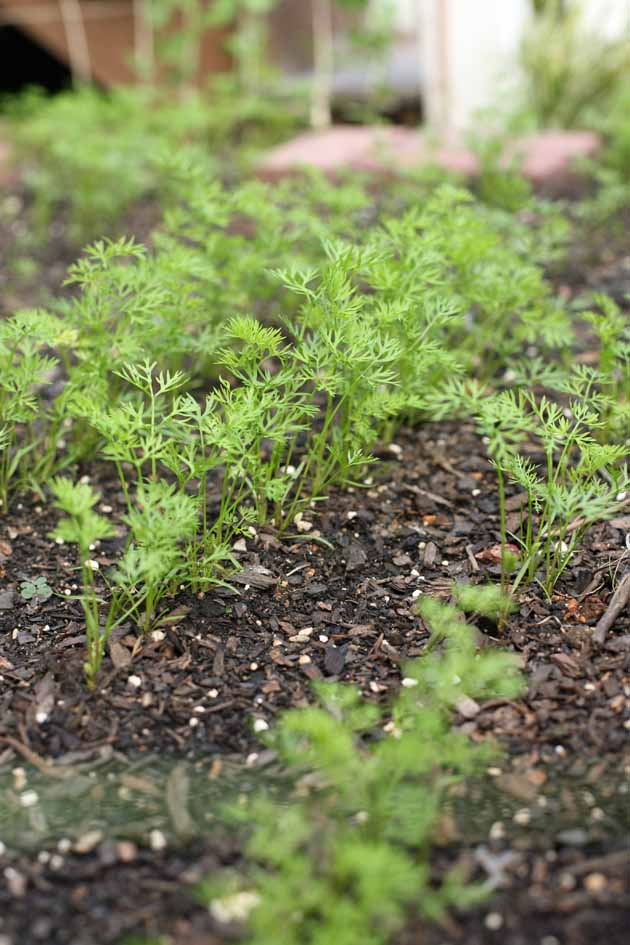
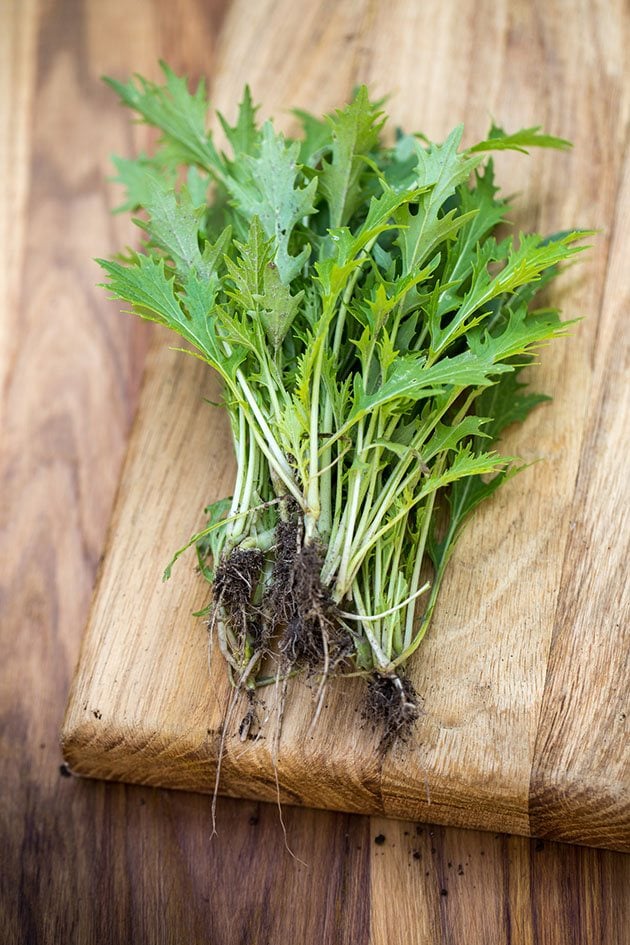

Hi, thanks for sharing this information. We have a church garden and lots of sweet potatoes. The vi es we’re all over the place but we gave the cut vines to volunteers to feed their rabbits. Question.. can we freeze the potatoes if we cut them up, you mentioned purée but as l am not a baker l would love to freeze them without having freezer burn or frost on them.
Yes, you can freeze sweet potatoes but you’ll have to blanch them first. Did you read my post How to Freeze Sweet Potatoes? All the information on exactly how to do this is there.